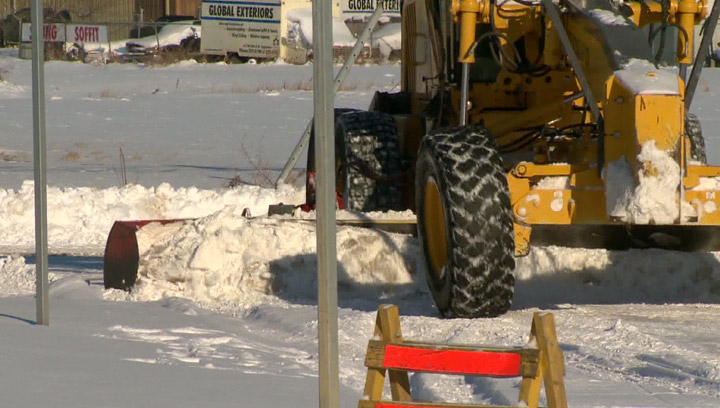Saskatoon’s governance and priorities committee meeting quickly discussed the city’s solution for its 2022 snow removal debt within 10 minutes on Wednesday.

The financial implications of the city’s 2022 emergency snow removal response totalled over $18 million.
Only $1.97 million of the response was experienced in 2022, while the $16 million of remaining work was completed in 2023.
A $5 million allocation from the 2024-25 major capital funding plan is to go toward the 2022 response and the remaining $13 million will be repaid in phase-ins of approximately $800,000 in 2024 and 2025.
“It is expected it will take 10 years to repay these costs based on the phase-in and applicable interest rate,” chief financial officer Clae Hack said.
If lighter snowfalls lead to a surplus in future years, the administration will look into accelerating the payments.
Coun. Sarina Gersher asked how the city plans to build up a reserve for future snow events.
“Ideally everybody would like to see more funds so we have the money readily available when those big snow events do occur which we are seeing happen more often due to climate change and other impacts that are happening in our community,” Hack said. “Unfortunately, we are dealing with a lot of other competing priorities right now as illustrated by our ongoing budget discussions to get our funding gap down.”
- ‘FLiRT’ COVID-19 subvariant dominant in Canada. What to know about the strain
- Reducing temporary visas may include offering permanent residency: Miller
- Anger after Montreal cyclist hits child about to board school bus with lights flashing
- A once-in-a-lifetime celestial explosion may be near — and Canadians can see
Hack said the city’s current snow removal budget is $14 million and the city has now put aside approximately $160,000 each year for future responses, aside from debt being repaid.
“By 2025, that will be a base of $320,000 every year that will go towards future events and then once this event is repaid, there will be $1.6 million in base funding,” Hack explained. “In 10 years’ time, there will be a decision made on what to do with that funding and certainly an option would be just to roll that into reserve funding contribution for future events.”
Mayor Charlie Clark asked what the financial impact of an internal loan versus an external loan would be on the city.
Hack said external loans are typically only borrowed for larger amounts that require set repayments.
“For loans that are smaller in value or where there is an opportunity to potentially accelerate repayments or the funding source can fluctuate year to year, we often look at internal loans as giving us more flexibility,” Hack responded.
By borrowing internally, the city is losing revenue that could have been invested.
“In order to offset that, we do require projects to match what we would have earned on the investment front,” Hack said.
Aside from the $850,000 of funding in 2024 and 2025 for repayment purposes, the city’s snow and ice management budget is expected to require $1.05 million in additional funding.
A city report claimed the increases are tied to growth in the city’s roadway and inventory due to inflation for fuel, towing costs, contractor services and grader blades.
The budgets also include resource and staffing requirements, including a cost of $115,300 in 2024 and 2025 to help deliver increased summer and winter maintenance.
Hack said another report is planned to go forward to SPC Transportation for an operational perspective on the lessons learned as early as next month.




Comments